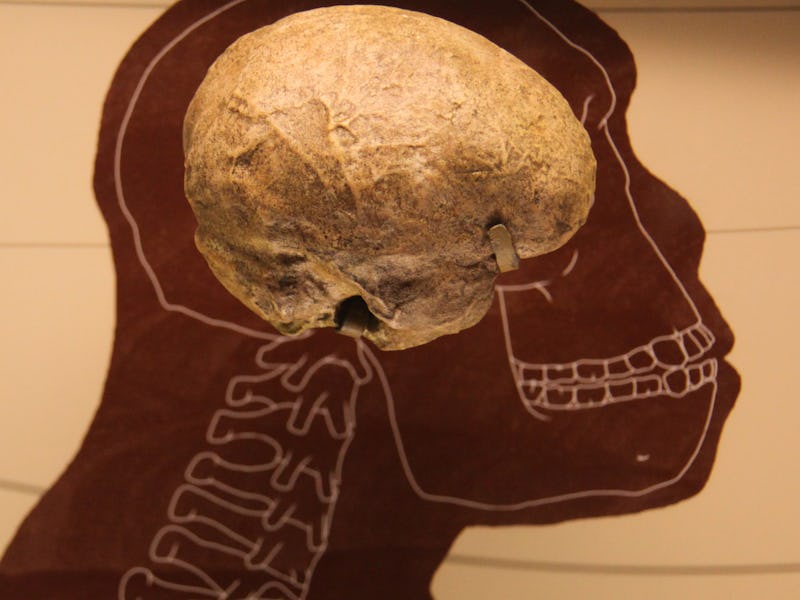Scientists Pinpoint The Real Differences Between Human and Ape Brains
It's more than just brain size.

Brain size is the most obvious advantage we have over our primate relatives, but it turns out that’s just where the differences begin. In a deep dive into the brain of humans, chimpanzees, and monkeys on a molecular level, scientists report in the journal Science why brain size and cell count alone don’t explain why humans are smarter than their great ape cousins.
In a paper published November 23, the international team of researchers behind the study report that human and non-human primate brains — which actually share a surprising number of characteristics — are distinctly different on the molecular and genetic level.
They discovered this after after sequencing the RNA of 247 tissue samples from 17 brain regions in six humans, five chimpanzees, and five macaques. At first, the scientists found that many of the brain regions — especially the cerebellum — an evolutionarily ancient part of the brain — share more similarities across species than they do with other brain regions within species. In other words, a human cerebellum is molecularly more similar to a chimp cerebellum than it is to a human hippocampus.
To find the differences between species, they had to dig a little deeper.
Neurons that express dopamine biosynthesis genes were found in brain regions of humans but not in the non-human primates studied.
They found these in the striatum, a brain region associated with motion and desion-making. There, humans exhibit differences in gene expression when compared to the other primates.
Specifically, the researchers’ results showed that interneurons expressing genes that code for dopamine synthesis are present in humans’ striata but not in non-humans’. This, they say, is part of what makes human brains uniquely human.
“Neuromodulatory transmitters, in particular dopamine, are involved in distinctly human aspects of cognition and behavior, such as working memory, reasoning, reflective exploratory behavior, and overall intelligence,” write the study’s authors.
“By analyzing brain regions involved in these processes, we show that evolutionary modifications in gene expression and the distribution of neurons associated with neuromodulatory systems may underlie cognitive and behavioral differences between species.”
The study’s authors note that the cortical interneurons in humans that express genes for dopamine production are depleted in patients who have Parkinson’s disease or dementia with Lewy bodies. This suggests that studying the differences and similarities between non-human and human brains could give some insights into human brain disease in the future.